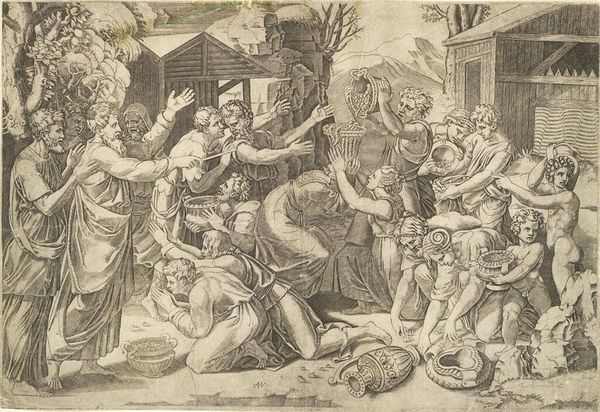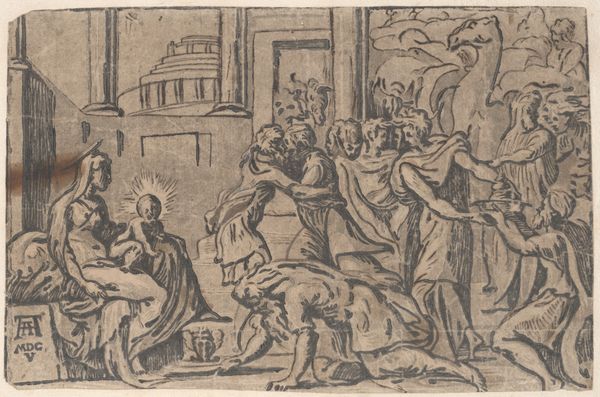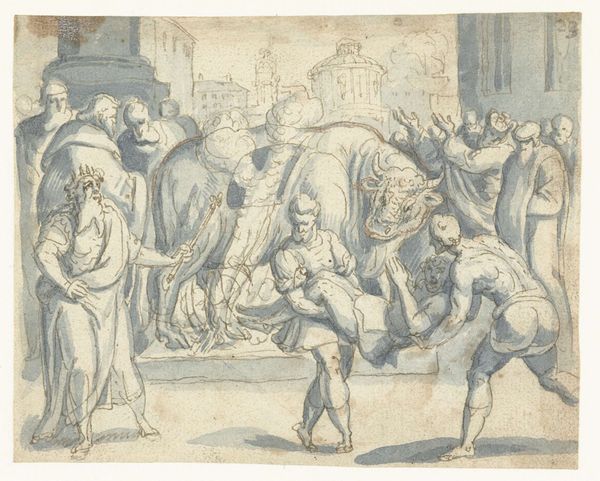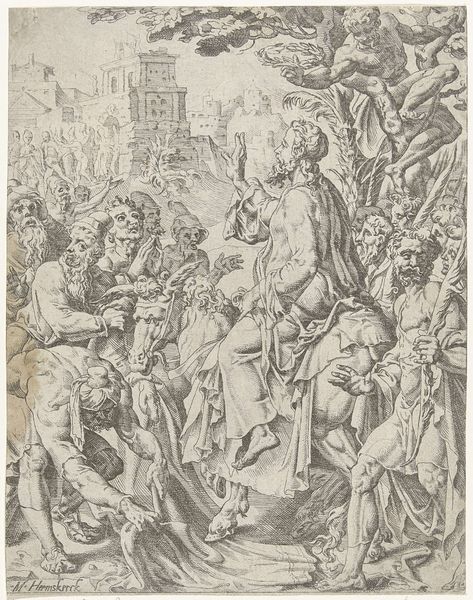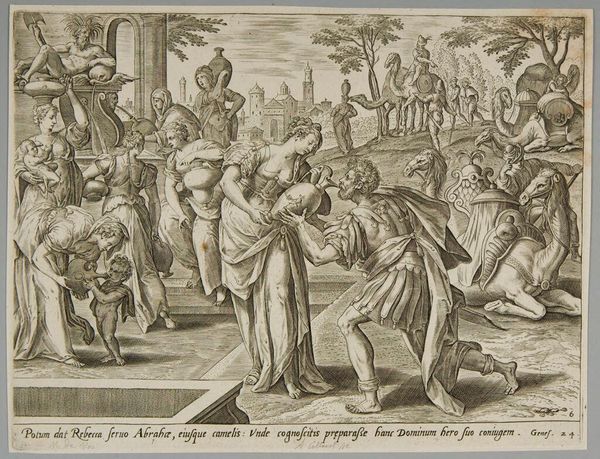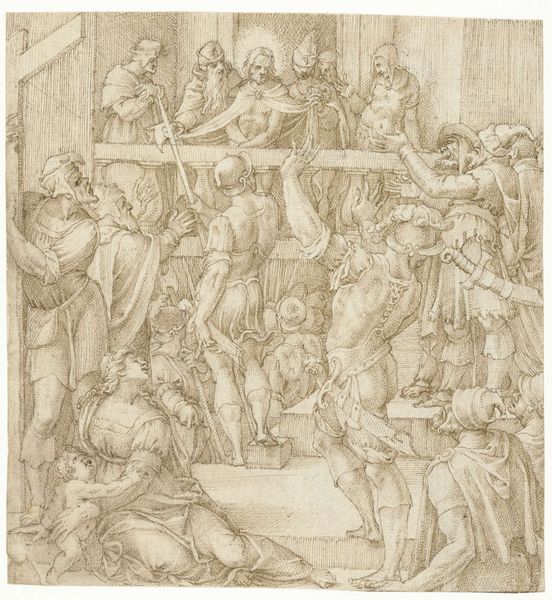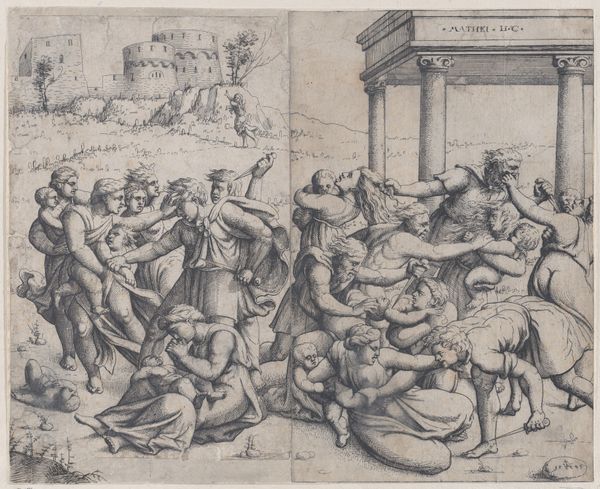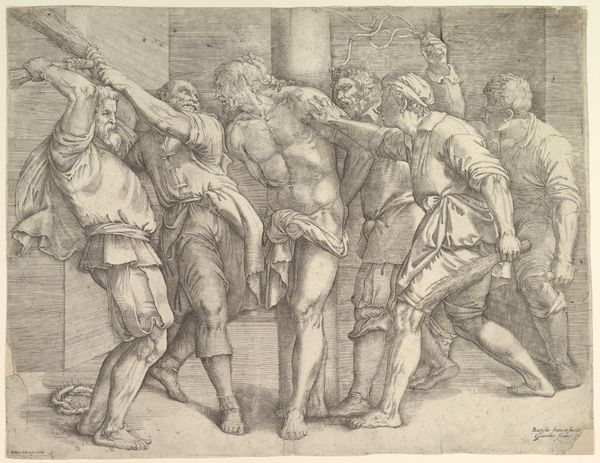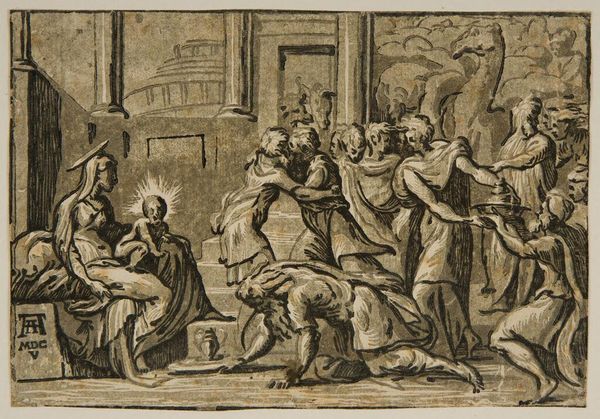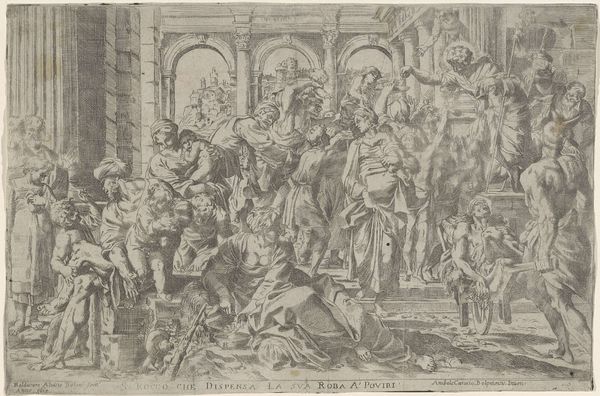
drawing, print, engraving
#
portrait
#
drawing
#
narrative-art
# print
#
pencil sketch
#
figuration
#
jesus-christ
#
pencil drawing
#
soldier
#
sketch
#
pen-ink sketch
#
christianity
#
history-painting
#
italian-renaissance
#
engraving
#
christ
Copyright: Public domain
Editor: This is Albrecht Dürer's "The Cross of Christ with Saint Veronica," created in 1520. It's a stunning engraving, filled with figures. I am struck by how much movement Dürer captures with seemingly simple lines. How do you read this emotionally and symbolically? Curator: It is indeed a masterful portrayal of the Passion. The engraving holds multiple layers of meaning, deeply rooted in cultural memory. Observe the figure of Veronica, holding the cloth imprinted with Christ’s face. It represents not just a physical act of compassion, but the very idea of sacred imagery. Editor: It seems like she's one of the few showing any compassion. What do the other figures represent? Curator: The soldiers, with their elaborate armor and expressions of cruelty, signify temporal power and the abuse thereof. The crowd, a chaotic mix of onlookers, represents the fickle nature of public opinion, the psychological phenomenon of collective behaviour. But let's consider the location... Does the architectural setting speak to you? Editor: It looks almost stage-like... are they observers? Curator: Precisely. This theatrical backdrop invites us, the viewers, to witness and perhaps even judge. Think about the enduring impact of this scene, depicted across centuries. Dürer wasn't merely illustrating a biblical event; he was engaging with the viewer, prompting reflection on themes of power, suffering, and redemption. What does the engraving teach us, would you say? Editor: It definitely makes you think about how easily people can become caught up in the moment, losing sight of empathy. It's more than just a historical depiction; it is a commentary on human behavior. Curator: Exactly! And by using symbols that resonate across time, Dürer ensured his message would continue to be potent for generations.
Comments
No comments
Be the first to comment and join the conversation on the ultimate creative platform.
